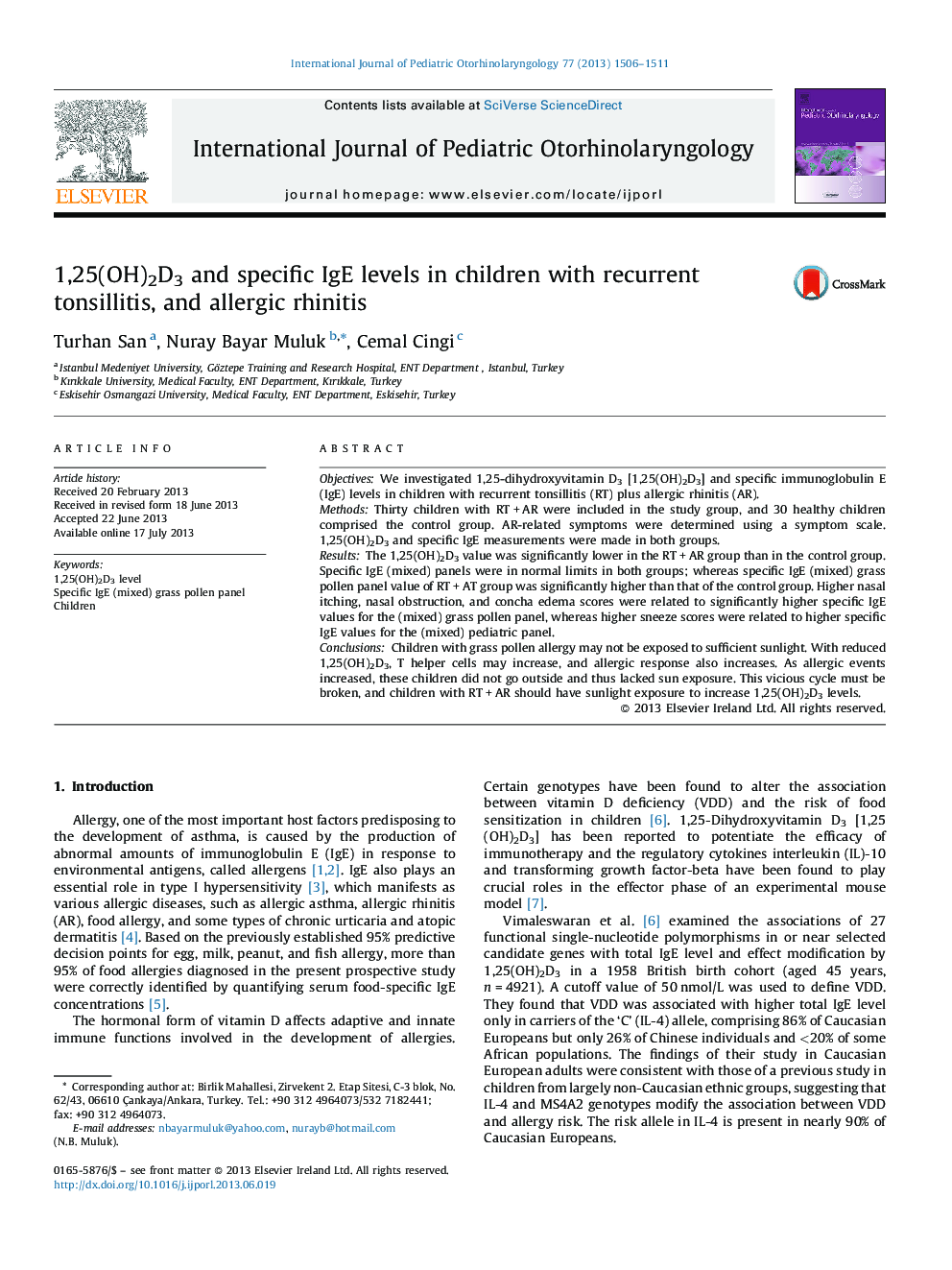| کد مقاله | کد نشریه | سال انتشار | مقاله انگلیسی | نسخه تمام متن |
|---|---|---|---|---|
| 6213522 | 1606016 | 2013 | 6 صفحه PDF | دانلود رایگان |

ObjectivesWe investigated 1,25-dihydroxyvitamin D3 [1,25(OH)2D3] and specific immunoglobulin E (IgE) levels in children with recurrent tonsillitis (RT) plus allergic rhinitis (AR).MethodsThirty children with RTÂ +Â AR were included in the study group, and 30 healthy children comprised the control group. AR-related symptoms were determined using a symptom scale. 1,25(OH)2D3 and specific IgE measurements were made in both groups.ResultsThe 1,25(OH)2D3 value was significantly lower in the RTÂ +Â AR group than in the control group. Specific IgE (mixed) panels were in normal limits in both groups; whereas specific IgE (mixed) grass pollen panel value of RTÂ +Â AT group was significantly higher than that of the control group. Higher nasal itching, nasal obstruction, and concha edema scores were related to significantly higher specific IgE values for the (mixed) grass pollen panel, whereas higher sneeze scores were related to higher specific IgE values for the (mixed) pediatric panel.ConclusionsChildren with grass pollen allergy may not be exposed to sufficient sunlight. With reduced 1,25(OH)2D3, T helper cells may increase, and allergic response also increases. As allergic events increased, these children did not go outside and thus lacked sun exposure. This vicious cycle must be broken, and children with RTÂ +Â AR should have sunlight exposure to increase 1,25(OH)2D3 levels.
Journal: International Journal of Pediatric Otorhinolaryngology - Volume 77, Issue 9, September 2013, Pages 1506-1511